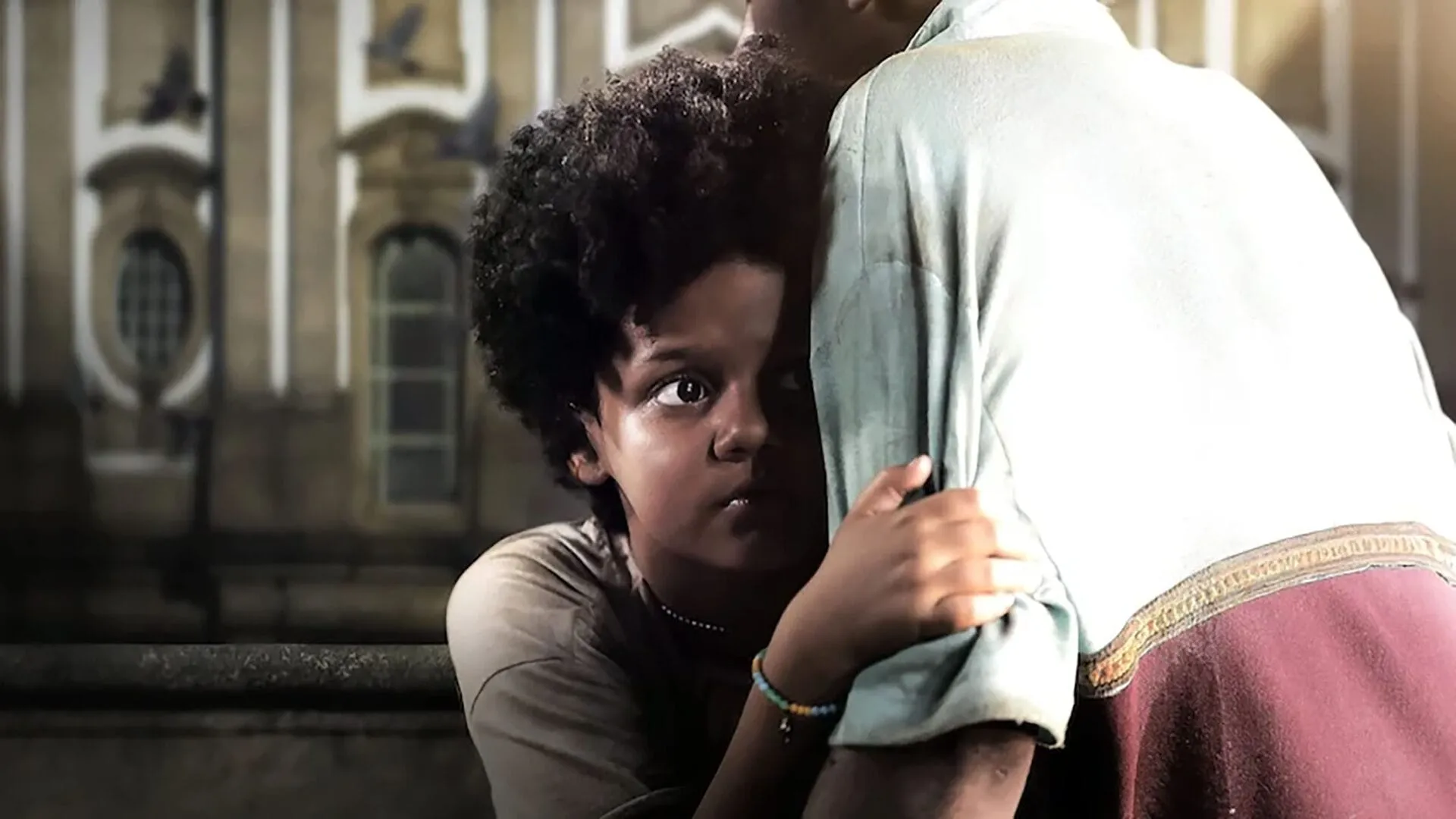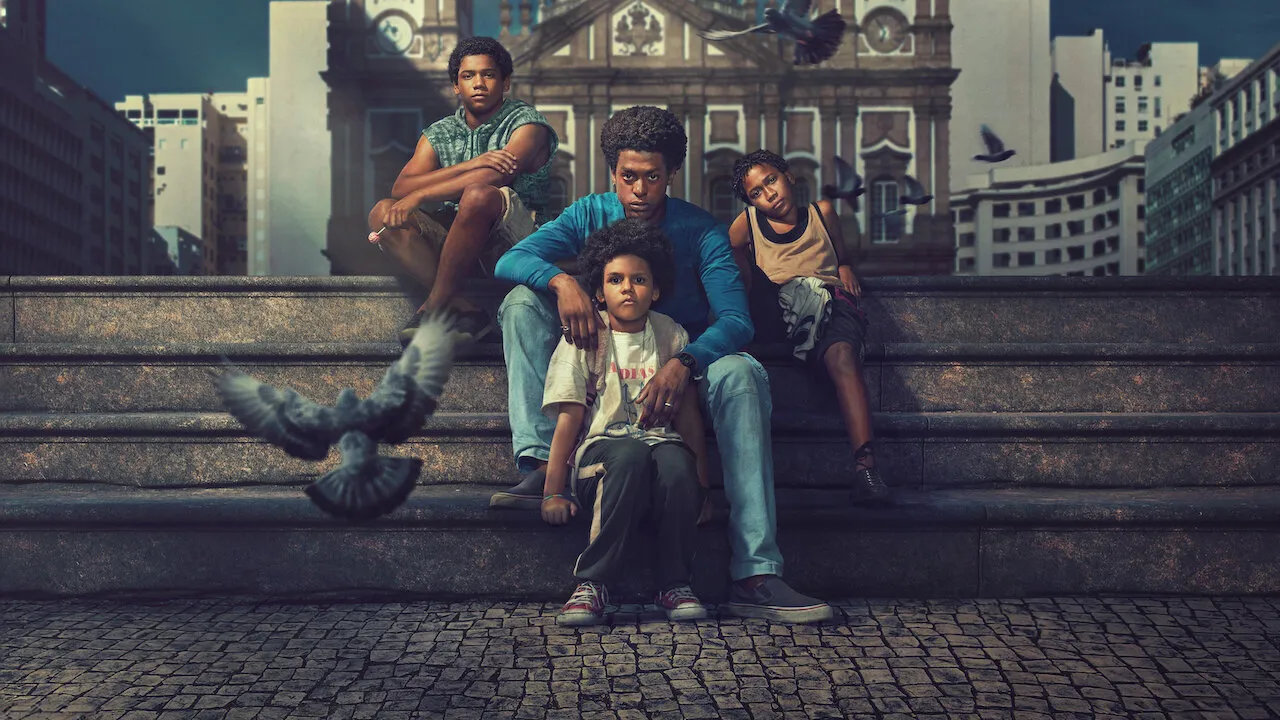In the Children of the Church Steps miniseries from Brazil, viewers are immersed in the lives of four made-up children named Douglas, Seven, Popcorn, and Jesus against the backdrop of the horrifying Candelária massacre. This incident, in which eight individuals, including six minors, were killed, serves as a powerful reflection of systemic neglect and societal failure in addition to being a historical reference.
The series uses a multi-perspective narrative format to fully engage the audience with each character’s struggles. This approach is emblematic of a larger trend in modern streaming TV, where character-driven storytelling is more important than plots that follow a straight line. This method encourages emotional connection, but it can also lead to uneven pacing, making it difficult for viewers to balance the weight of each story with the tragedy that is about to happen.
Children of the Church Steps also brings up important issues regarding media representation in a quest. It highlights the difficulties vulnerable youth face but frequently overlooks the larger societal backdrop, which could limit its cultural effect. As TV keeps changing, this series shows how storytelling can be used to start conversations about social justice and the fragility of childhood, paving the way for future shows that put emotional depth above social commentary.
Depths of Innocence: Character Profiles in Children of the Church Steps
The lives of its young characters are intricately woven together in Children of the Church Steps, with each character reflecting a different aspect of the prevalent societal problems in their area. The fight for dignity in the face of despair is best exemplified by Douglas, who is at the heart of this narrative. His determination to honor his deceased father.
The larger themes of grief and duty are highlighted by his quest for a proper burial for a man he saw as a father figure. The weight of expectation put on young shoulders in a society that frequently overlooks its most vulnerable members is reflected in Douglas’s journey in addition to his own loss. This character makes me think about how systemic neglect can turn the search for peace into a desperate act to stay alive.
The complexities of sexual identity within a harsh world are explored in Seven’s storyline, in contrast. We see the careful interaction of acceptance and rejection as he navigates his feelings and relationships, especially with Popcorn. This investigation of sexuality serves as a lens through which viewers can look at the societal norms that shape and sometimes limit individual expression.
Seven’s character goes against common stereotypes and gives us a complex picture that fits current conversations about gender and identity. Despite being starkly set against societal judgment, his struggles are emblematic of the larger cultural shifts toward inclusivity, illustrating the duality of acceptance and alienation.
The group’s youngest member, Popcorn, embodies longing and lost innocence. Her strong need for her mother and the memories of being left behind that haunt her are powerful comments on the effects of family chaos. Her character shows the often-overlooked emotional damage that poverty does to children as she deals with the harsh facts of life on the streets.
Popcorn’s innocence, tempered by the harshness of her surroundings, highlights the loss of childhood dreams and the resilience needed to move forward. Anyone who has dealt with the complexities of childhood trauma will identify with her journey because the series skillfully captures her internal struggle.
Lastly, Jesus’ history of stress from growing up in an orphanage where he was abused shows how social care systems often fail. A moving reflection on the search for identity amid chaos is his quest for peace and belonging. As Jesus tries to escape from the shadows of his past, his character shows how important it is to heal and be part of a group. His interactions with the other characters show how important bonds can be formed during hard times and how shared experiences can help people develop resilience even in the worst situations.
Collectively, these characters show the complicated web of childhood events shaped by societal neglect. Children of the Church Steps is a microcosm of larger cultural and social factors and reflects individual struggles. While encouraging empathy and understanding, the representation of these young lives forces viewers to confront uncomfortable truths about systemic problems.
The show sets a standard for how storytelling can reveal the complexities of human experience, paving the way for future representations that honor the depth of various narratives. This is especially true in an era where streaming platforms increasingly focus on character-driven stories.
Shifting Perspectives: The Narrative Structure of Children of the Church Steps
Children of the Church Steps uses a multi-perspective approach that encourages viewers to deeply engage with its main characters, each of whom embodies a different aspect of societal struggle. The series allows for closely examining each character’s unique experiences by allocating each episode to a different character (Douglas, Seven, Popcorn, or Jesus).
The narrative is improved by this choice of storytelling, which reveals the complex ways systemic problems like poverty, violence, and identity affect people’s lives. The emotional stakes become real as viewers are led through each character’s lens, creating a deep connection beyond sympathy.
However, this approach has two sides. The goal is to make people more emotionally engaged, but the constant changes in focus can lead to a sense of separation. The audience may be left to deal with the weight of several stories that all lead to the same tragic event—the Candelária massacre—due to the abrupt changes from one character’s turmoil to another’s in the narrative.
This pacing problem highlights a larger trend in modern TV, where character-driven narratives frequently emphasize emotional depth more than conventional storytelling coherence. As a result, viewers may experience a state of flux between connection and disorientation, similar to how the characters’ lives are chaotic.
The episodic framework also creates quests about narrative prioritization. The short length of each episode—about 40 minutes—can feel liberating and limiting in a landscape where streaming services are increasingly geared toward binge-watchers. The format encourages viewers to immerse themselves in the world of each character, but it also runs the risk of glossing over how their narratives are linked. Some viewers may want a more cohesive exploration of the main themes instead of a series of moving short stories, even though this is an interesting way to do things.
Children of the Church Steps represents a significant change in storytelling by utilizing the power of character viewpoints to delve into more profound emotional truths. However, as it navigates the complexities of pacing and flow, it also shows the difficulties of such a risky narrative approach. This duality shows the complexity of the characters’ lives and serves as a commentary on the larger societal problems that affect them, eliciting both support and criticism from the audience.
Innocence Lost: Emotional and Social Themes in Children of the Church Steps
Children of the Church Steps looks at the theme of childhood against a backdrop of violence and societal neglect in a powerful way. The series lets viewers into the broken lives of its young characters, illustrating how harsh realities can not only take away innocence but also break it.
Each character’s story reflects the larger ramifications of growing up in a dangerous place where only brief moments of joy are seen through the constant fear of violence. The contrast of childhood dreams with a backdrop of despair highlights the fragility of youth and the resilience resulting from such turmoil.
While showing childhood innocence as both a valuable gift and a vulnerable state, the show captures its essence. Embodying the emotional complexities resulting from their circumstances, Douglas, Seven, Popcorn, and Jesus manage their world with hope and resignation.
Their interactions often switch between friendship and the need to stay alive. This shows how violence can change not only their childhood memories but also how they think about trust and safety. This exploration serves as a powerful commentary on the loss of childhood innocence, forcing viewers to confront the uncomfortable truth that many children around the world lose their childhoods far too soon.
Children of the Church Steps serves as a harsh societal commentary on poverty and systemic problems in Brazilian society and the human narratives it contains. The series doesn’t shy away from showing how bad things are for homeless children, showing how societal neglect keeps a cycle of despair going on.
The characters’ problems are emblematic of our society’s bigger socioeconomic problems, including inequality and violence. The show criticizes how social systems fail to protect the most vulnerable children through the lens of their lives, making it more than just a story about individuals but a call to recognize the systemic flaws that enable such tragedies to continue.
Children of the Church Steps stands out as a compelling case study in a time when streaming services are increasingly trying to address social problems through their narratives. Its honest portrayal of childhood in the midst of violence and its critical study of societal neglect mark a change in the way stories are told: stories that put emotional depth first while also reflecting the truths of modern society.
This dual focus improves the narrative and raises the conversation about social justice and representation, encouraging the audience to engage with the important issues at the heart of the characters’ problems.
Crafting Reality: Production Quality and Performances in Children of the Church Steps
Children of the Church Steps is notable for its powerful narrative and stunning production value, essential to engross viewers in the harsh realities that its characters must deal with. Under the direction of Márcia Faria and Luis Lomenha, the film has a gritty look that fits with the story’s emotional weight. The cinematography is defined by its raw, unfiltered approach.
Camera work frequently feels visceral and immediate, putting the audience in the middle of the characters’ problems. Natural lighting and handheld shots enhance the setting’s sense of authenticity, giving viewers a strong sense of urgency and closeness. The audience can experience the children’s world as a place of beauty and brutality thanks to this visual approach, which successfully highlights the themes of despair and resilience in the series.
The directors’ choices about framing and composition strengthen the emotional effect of key scenes by combining times of great joy and great sadness. For example, the bright colors of Rio de Janeiro’s streets contrast sharply with the depressing realities of homelessness and violence, creating a visual contrast that forces viewers to confront the complexities of urban life. This choice of style enhances the storytelling and places the series in a larger cinematic tradition that uses powerful images to engage with social issues.
Concerning the performances, the young actors give their roles a lot of depth, bringing the characters to life. Samuel Silva does a great job as Douglas. He embodies a deep sense of grief and determination, perfectly capturing the complexity of a child with adult duties. His act makes you feel both heartbroken and hopeful, showing how hope and despair are inside you.
Wendy Queiroz does a great job as Popcorn. She brings a mix of innocence and vulnerability to the role, making her character’s problems even more real. There is a clear sense of her need for connection, and her acting hits home, making the audience feel what she feels. As he navigates the complex land of identity and acceptance, Patrick Congo’s portrayal of Seven adds another layer of depth. His skill in embodying the complexities of youth under societal pressures and capturing the subtleties of his character’s inner battle is commendable.
Together, the actors’ performances take the series beyond simple dramatization and turn it into a powerful look at the power of childhood in the face of hardship. Strong direction and compelling performances enhance the story and establish Children of the Church Steps as an important piece of modern television that challenges standard narratives and encourages viewers to engage with important social issues through the lens of real-life stories.
Navigating Complexities: Conclusion and Overall Impression of Children of the Church Steps
Children of the Church Steps is an important addition to modern TV, marked by its daring storytelling and profound emotional impact. One of its main advantages is its multi-perspective narrative approach, which enables a rich study of childhood amid societal turmoil.
Another highlight is the young actors’ performances, which give their characters’ challenges authenticity and depth. The direction and cinematography further increase the series’ effect, creating a visceral experience that immerses viewers in the harsh realities of city life.
Some things about the series are bad, though. At times, the pacing can feel disjointed, leading to situations where the emotional weight of specific stories may be lost amidamid abrupt changes in focus. The show also deals with important social problems head-on, but it sometimes skips over the systemic details that could help viewers better understand the characters’ environments.
In the end, Children of the Church Steps strongly impacts its audience, eliciting empathy and reflection. It serves as a sobering warning of the realities faced by many children today by its unflinching depiction of childhood innocence lost amid violence. As television keeps changing, this series shows how storytelling can shed light on important social problems, paving the way for future series emphasizing emotional depth and cultural commentary.
The Review
Children of the Church Steps
Children of the Church Steps is a powerful exploration of how childhood innocence can be lost in societal turmoil, marked by strong performances and a striking visual style. Though pacing problems occasionally diminish the series' emotional impact, its multi-perspective narrative immerses viewers in the harsh realities faced by its characters. The series makes a significant contribution to modern TV by confronting important social problems with authenticity and encouraging reflection on the lives of marginalized young people.
PROS
- Powerful performances by the young cast, enhancing emotional depth.
- Multi-perspective narrative offers a nuanced exploration of childhood experiences.
- Striking cinematography and direction create an immersive viewing experience.
- Addresses pressing social issues, promoting awareness and empathy.
- Strong character development that resonates with contemporary audiences.
CONS
- Pacing can feel disjointed, affecting narrative cohesion.
- Some systemic issues are only superficially explored.
- Rapid shifts between characters may dilute emotional impact.




















































